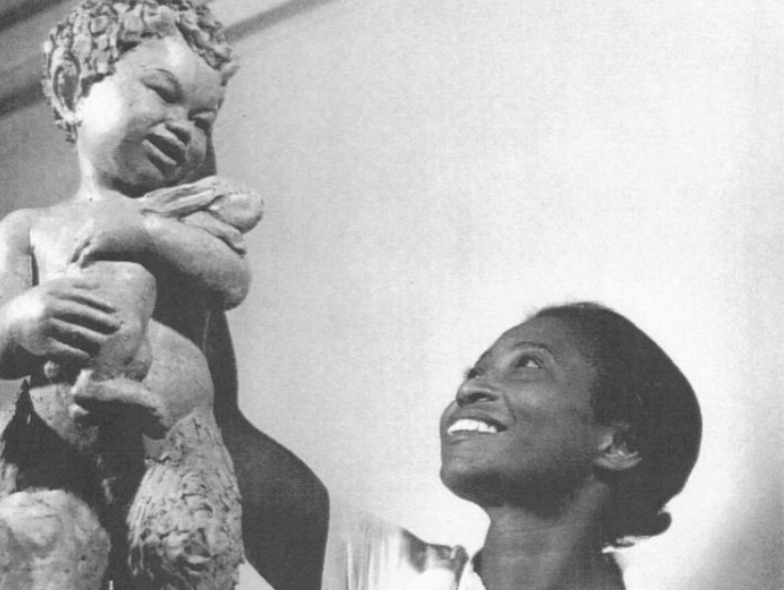Sculptor of New York World’s Fair commission “The Harp” and Julius Rosenwald Fellowship- winning “Gamin,” Augusta Savage built community as a teacher and prominent artist during the Harlem Renaissance.
Savage was born in Green Cove Springs, Florida in 1892 to Reverend Edward Fells and Cornelia Fells. The young artist crafted clay sculptures of animals despite her father’s disapproval.
“My father licked me four or five times a week and almost whipped all the art out of me,” said Savage, according to the Smithsonian American Art Museum.
After sculpting prize-winning clay figures at West Palm Beach County Fair, Savage briefly searched for work in Florida before departing for New York City in 1921, as the Harlem Renaissance ushered in a cultural boom.
She married twice before her move to Harlem. She had her only child Irene with her first husband John T. Moore, and acquired her surname from her second husband James Savage, though they later divorced.
After finishing a four-year course at Cooper Union School of Art at an accelerated pace, Savage found success as a sculptor of now-legendary Black community leaders, including Founding Member of the NAACP W. E. B. Du Bois and Pan-Africanist Leader Marcus Garvey.
Savage won a scholarship to travel to Paris and hone her craft at Fontainebleau School of Fine Arts. Her admission was revoked upon the committee’s discovery that she was Black. In response, Savage alerted the Black press and spread the word of her unjust denial. The decision remained unturned, though Savage would later go on to sculpt in the City of Love.
Modeled after her nephew, Savage created the award-winning “Gamin.”

As a two-time winner of the Julius Rosenwald Fellowship and recipient of a Carnegie Foundation grant, Savage sculpted in Paris and across Western Europe until 1932.
She opened Savage Studio of Arts and Crafts after coming back to Harlem. From Abstract Expressionist painter Norman Lewis to acclaimed painters and power couple Gwendolyn Knight and Jacob Lawrence, Savage taught many artists that would go on to flourish in their respective career paths.
In addition to running her studio, Savage became the first director of Harlem Community Art Center.
The 1939 New York World’s Fair commissioned her to sculpt the 16-foot musical monument “The Harp,” which brought to life the poem “Lift Every Voice and Sing” by James Weldon Johnson.

The sculpture attracted awe-stricken passerby’s, ranking among the most photographed works at the fair, before the monument’s demolition at the fair’s closing.
Unbeknownst to her, Savage lost her position at Harlem Community Art Center due to her leave of absence while creating “The Harp.” The center eventually closed down from lack of funding.
Savage opened two short-lived art centers, before moving to Saugerties, New York. She continued teaching and sculpting until her death in 1962.
She lives on through exhibitions of her work and the art of those she taught.
“I have created nothing really beautiful, really lasting, but if I can inspire one of these youngsters to develop the talent I know they possess, then my monument will be in their work,” said Savage in an interview with Metropolitan Magazine.
Originally posted 2021-08-31 10:00:00.








